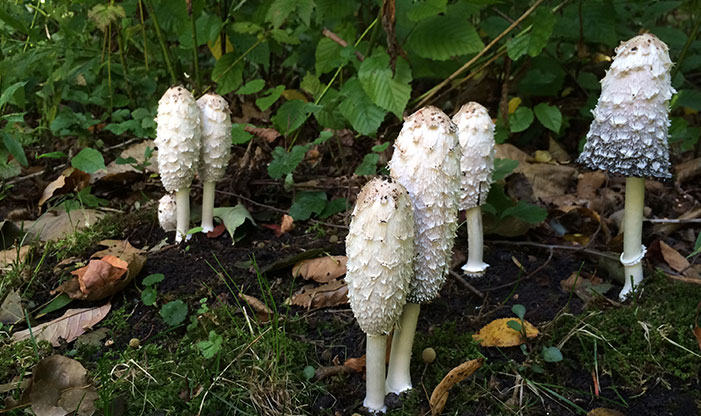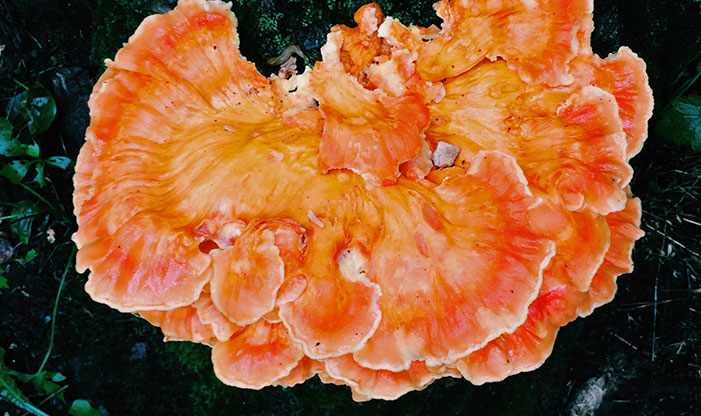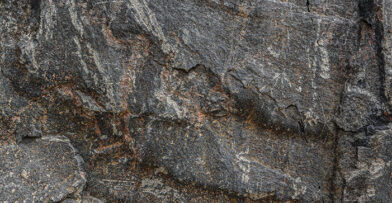Fall Fungi comes in many diverse forms, often in striking shapes and colors. Due to the moist air that Lake Michigan provides, Schlitz Audubon is blessed with more mushrooms than many other locations in the area.
Commonly Found Fungi at the Center
Two of our common fungi at the Center are perennial in their life cycle, but make new above ground appearances every year.
Chicken-of-the-Woods (pictured above), or Sulphur Polypore, is a striking bracket fungus that appears from May to August. It forms sulphur-yellow to yellow-orange horizontal shelves on the side of a tree, the margins of which are edible. They appear for many successive years from the trees they grow on, and they are one of the heart rot fungi, which means they live on, and help decompose, the dead wood that lies in the central areas of the trunk and branches. This process is extremely important to many species of wildlife that need the tree hollows for protection, shelter, and reproduction.

Shaggy Mane.
The Shaggy Mane is a type of inky cap mushroom. That means shortly after appearing it starts to digest itself into a black ooze. Prior to this change it is edible, but not after, and poisoning can also occur if consumed with alcohol. Our best patch usually appears in fall in the grass adjacent to the fire pit near the Pavilion, and because one fungus produces many mushrooms over a period of many days, there are mushrooms in the area over a much longer time period than one individual mushroom lasts. This group of fungi departs from the usual method of dispersing its spores by wind, and embeds them in a black fluid that is attractive to flies. Flies then carry the liquid with them until it dries and releases the spores in a new location.
Fall Fungi Perform Important Ecosystem Functions
Ecologically, if humans became extinct the rest of the world would function just fine – but the same cannot be said for fungi. They are so important in recycling nutrients and feeding so many plants, yet they remain largely a mystery. Fungi are the best wood decomposers. If they didn’t carry out this critical function, we would be tripping over the first generation of woody plants and not have the building materials for any new ones.
The association of fungi with tree roots has long been known to be critical to the survival of the tree since this “mycorrhizal,” or symbiotic, association, is what supplies the tree with water and nutrients. Every tree has hundreds of thousands of miles of fungal threads performing this function.
A Warning About Fungi in the Wild
Never eat a wild mushroom unless you can be absolutely certain of its identity. There are instances of professors of mycology (the study of fungi) who have poisoned themselves. People can also have adverse reactions to them due to individual sensitivities or to other organisms that invade the fungus. The beautiful – but deadliest – Death Angel is occasionally seen at the Center! Although certain varieties can be edible, they serve important functions on the land, so we ask that hikers leave them where they are to perform vital ecosystem services at Schlitz Audubon.
Late summer and fall are the best times to see most of these marvels of mystery, so plan some hiking time at the Center in September and October. If we experience a wetter than normal autumn, you will see greater numbers and kinds of mushrooms. September showers bring October “flowers” of fall fungi!


